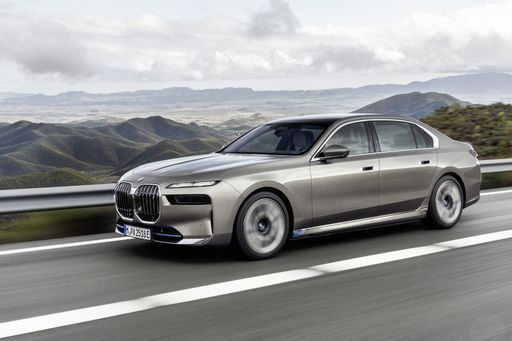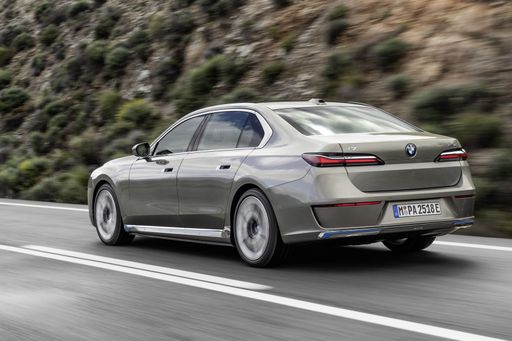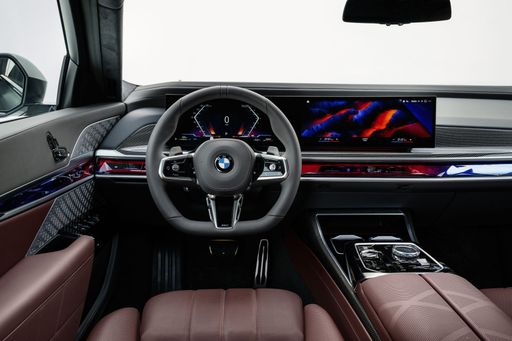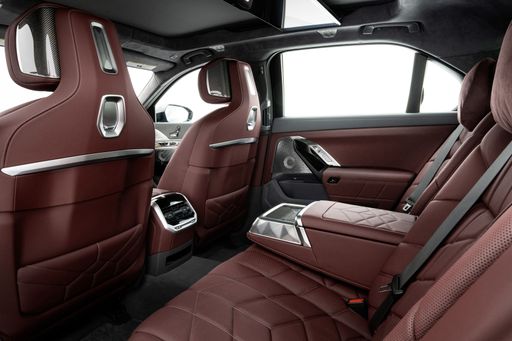BMW i7 vs DS Automobiles N°8 – Performance, range & efficiency compared
Compare performance, boot capacity, efficiency and price at a glance.
Find out which car is the better choice for you – BMW i7 or DS Automobiles N°8?
Costs and Efficiency:
Price and efficiency are often the first things buyers look at. Here it becomes clear which model has the long-term edge – whether at the pump, the plug, or in purchase price.
DS Automobiles N°8 has a clearly advantage in terms of price – it starts at 49500 £, while the BMW i7 costs 99200 £. That’s a price difference of around 49714 £.
In terms of energy consumption, the advantage goes to the DS Automobiles N°8: with 15.70 kWh per 100 km, it’s slightly more efficient than the BMW i7 with 18.50 kWh. That’s a difference of about 2.80 kWh.
As for range, the DS Automobiles N°8 performs slightly better – achieving up to 749 km, about 125 km more than the BMW i7.
Engine and Performance:
Power, torque and acceleration say a lot about how a car feels on the road. This is where you see which model delivers more driving dynamics.
When it comes to engine power, the BMW i7 has a decisively edge – offering 659 HP compared to 375 HP. That’s roughly 284 HP more horsepower.
In acceleration from 0 to 100 km/h, the BMW i7 is decisively quicker – completing the sprint in 3.70 s, while the DS Automobiles N°8 takes 5.40 s. That’s about 1.70 s faster.
In terms of top speed, the BMW i7 performs evident better – reaching 250 km/h, while the DS Automobiles N°8 tops out at 190 km/h. The difference is around 60 km/h.
There’s also a difference in torque: BMW i7 pulls decisively stronger with 1100 Nm compared to 509 Nm. That’s about 591 Nm difference.
Space and Everyday Use:
Beyond pure performance, interior space and usability matter most in daily life. This is where you see which car is more practical and versatile.
Both vehicles offer seating for 5 people.
In curb weight, DS Automobiles N°8 is clearly perceptible lighter – 2132 kg compared to 2595 kg. The difference is around 463 kg.
In terms of boot space, the DS Automobiles N°8 offers slightly more room – 621 L compared to 500 L. That’s a difference of about 121 L.
When it comes to payload, BMW i7 minimal takes the win – 535 kg compared to 520 kg. That’s a difference of about 15 kg.
Who comes out on top?
Overall, the BMW i7 shows itself to be wins solidly and secures the title of DriveDuel Champion.
It convinces with the more balanced overall package and proves to be the more versatile choice for everyday use.

BMW i7
BMW i7
The new BMW i7 epitomises luxury and innovation, seamlessly blending advanced technology with elegant design. Its interior offers an unparalleled experience, with premium materials and cutting-edge features that create a tranquil yet engaging atmosphere for both driver and passengers. The i7's performance is both dynamic and efficient, demonstrating BMW's commitment to sustainable driving without compromising on the exhilarating drive the brand is known for.
details @ press.bmwgroup.com
@ press.bmwgroup.com
 @ press.bmwgroup.com
@ press.bmwgroup.com
 @ press.bmwgroup.com
@ press.bmwgroup.com
 @ press.bmwgroup.com
@ press.bmwgroup.com
DS Automobiles N°8
The N°8 captivates automotive enthusiasts with its striking design and dynamic presence on the road. This model effortlessly combines luxury and performance, making it a standout choice for those seeking a thrilling driving experience. With an interior that prioritizes comfort and cutting-edge technology, the N°8 truly redefines what it means to drive in style.
details

|
|
|
|
|
Costs and Consumption |
|
|---|---|
|
Price
99200 - 157000 £
|
Price
49500 - 69400 £
|
|
Consumption L/100km
-
|
Consumption L/100km
-
|
|
Consumption kWh/100km
18.5 - 20.8 kWh
|
Consumption kWh/100km
15.7 - 17.4 kWh
|
|
Electric Range
559 - 624 km
|
Electric Range
550 - 749 km
|
|
Battery Capacity
101.70 kWh
|
Battery Capacity
73.7 - 97.2 kWh
|
|
co2
0 g/km
|
co2
0 g/km
|
|
Fuel tank capacity
-
|
Fuel tank capacity
-
|
Dimensions and Body |
|
|---|---|
|
Body Type
Sedan
|
Body Type
SUV
|
|
Seats
5
|
Seats
5
|
|
Doors
4
|
Doors
5
|
|
Curb weight
2595 - 2770 kg
|
Curb weight
2132 - 2289 kg
|
|
Trunk capacity
500 L
|
Trunk capacity
566 - 621 L
|
|
Length
5391 mm
|
Length
4820 mm
|
|
Width
1950 mm
|
Width
1920 mm
|
|
Height
1544 mm
|
Height
1580 mm
|
|
Max trunk capacity
-
|
Max trunk capacity
1498 - 1553 L
|
|
Payload
480 - 535 kg
|
Payload
508 - 520 kg
|
Engine and Performance |
|
|---|---|
|
Engine Type
Electric
|
Engine Type
Electric
|
|
Transmission
Automatic
|
Transmission
Automatic
|
|
Transmission Detail
Reduction Gearbox
|
Transmission Detail
Reduction Gearbox
|
|
Drive Type
Rear-Wheel Drive, All-Wheel Drive
|
Drive Type
Front-Wheel Drive, All-Wheel Drive
|
|
Power HP
455 - 659 HP
|
Power HP
258 - 375 HP
|
|
Acceleration 0-100km/h
3.7 - 5.5 s
|
Acceleration 0-100km/h
5.4 - 7.8 s
|
|
Max Speed
205 - 250 km/h
|
Max Speed
190 km/h
|
|
Torque
650 - 1100 Nm
|
Torque
343 - 509 Nm
|
|
Number of Cylinders
-
|
Number of Cylinders
-
|
|
Power kW
335 - 485 kW
|
Power kW
190 - 276 kW
|
|
Engine capacity
-
|
Engine capacity
-
|
General |
|
|---|---|
|
Model Year
2022 - 2023
|
Model Year
2025
|
|
CO2 Efficiency Class
A
|
CO2 Efficiency Class
A
|
|
Brand
BMW
|
Brand
DS Automobiles
|
Is the BMW i7 offered with different drivetrains?
Available configurations include Rear-Wheel Drive or All-Wheel Drive.
The prices and data displayed are estimates based on German list prices and may vary by country. This information is not legally binding.
